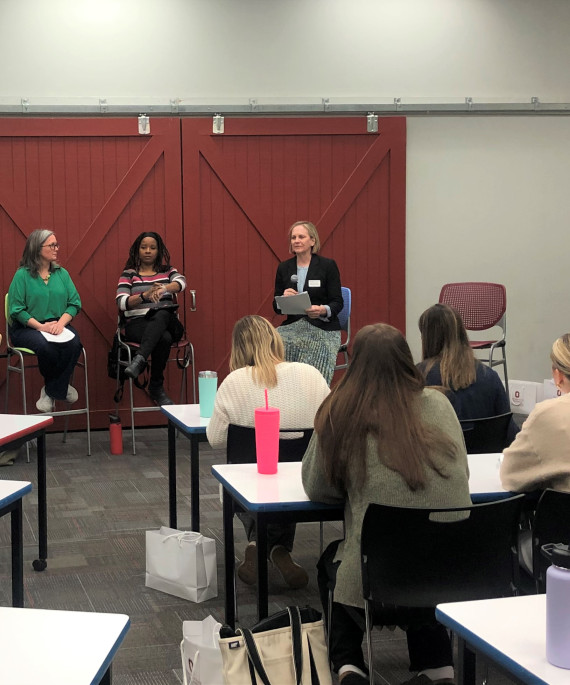
Jobs plentiful for qualified intervention specialists
Seven out of 10 Ohio school children with visual impairments do not receive services. This problem is due to a lack of qualified personnel to ensure these students get the most from their education. With more than 1,600 such children registered in Ohio, preparing more teachers for this specialization is a clear mandate.
A $1.25 million grant to the College of Education and Human Ecology’s Program in Visual Impairments aims to solve the shortage with an online, alternative certification program.
The program is accepting applications from certified teachers in Ohio for the 2016-2017 cohort. Grant funding covers tuition costs for licensure courses, a stipend in the summer and the purchase of a mandated software package. Scholars will be required to purchase books each semester, pay university fees and pay for licensure testing and applications.
In the first year, Tiffany Wild, assistant professor of teaching and learning, trained seven licensed Ohio educators who all added the certification in visual impairment to their qualifications. In the second year, eight students are enrolled.
The program content is presented predominantly online, with scholars meeting on selected Saturdays and during the summer.
“The beauty of this alternative pathway to certification is that it allows educators to complete it in one year while still working full time,” Wild said.
Cheryl Achterberg, dean of the college, said, “We welcome the opportunity to be part of the solution to the nationwide shortage of qualified teachers of those with visual impairments. Without trained teachers, the education of students who are blind or experience decreased vision is compromised.”
The need is particularly great outside metropolitan areas
The Ohio Department of Education’s database indicates that 98 Ohio teachers are licensed as intervention specialists in visual impairment. Data from the Ohio State School for the Blind Outreach team indicate that the largest concentration of teachers is located around major cities: Cleveland, Cincinnati, Columbus and Toledo.
As a result, large portions of the state, specifically the entire southeast, have low numbers of teachers of students with visual impairments (TVIs). A large population of students is without access to services.
In addition to current personnel shortage issues, almost half of practicing TVIs are anticipated to retire soon. According to the Ohio Department of Education, 27 percent of TVIs in Ohio planned to retire by 2012, and another 14 percent planned to retire by 2017.
For instance, as of 2013, the Ohio State School for the Blind expected at least five teachers to retire by the end of the 2012-2013 school year, with others to follow in the next five years. Similarly, Columbus City Schools, the largest metropolitan school district in Ohio, anticipates the need for five TVIs in the next five years.
For more information contact Tiffany Wild or complete an online application.




